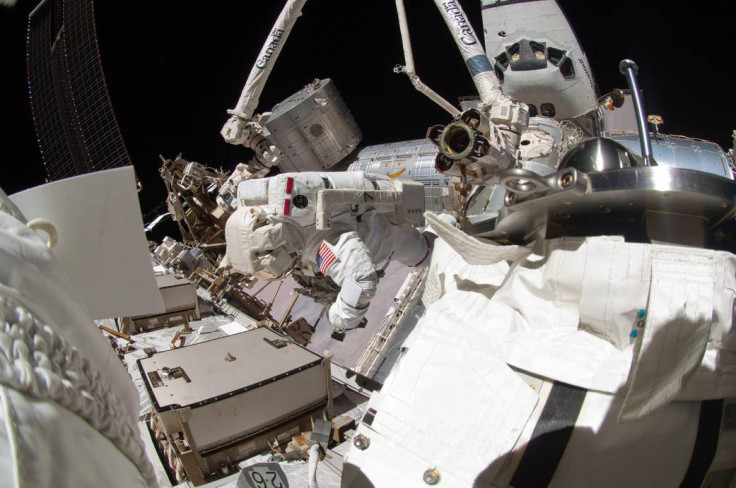Russian cosmonauts who stepped out of the ISS to conduct repairs set spacewalk record
After a gruelling 7-hour repair session, they realised the antenna was pointing in the wrong direction.

Two Russian cosmonauts - expedition commander Alexander Misurkin and flight engineer Anton Shkaplerov - currently aboard the International Space Station (ISS) accidentally set a record for the longest ever Russian spacewalk after they spent over eight hours attempting to repair a communications antenna.
The repair mission was supposed to last only six hours, but the mission got extended as things did not seem to go as expected, reports Science Alert. Around the seven-hour mark, the scientists realised that the antenna on the electronics box was not extending and that it was pointing in the wrong direction.
After repeatedly attempting to push and twist it in place, with flight controllers also trying to rotate it, they were able to get the antenna to work, but it was off by about 180 degrees. In spite of its askew position, it is functional, said Rob Navias, a Nasa TV commentator, during a live webcast.
The entire mission took the cosmonauts 8 hours and 13 minutes to complete, setting a new record for Russian spacewalks - the previous record was 8 hours and 7 minutes, set in 2013.
The replaced part - an old electronics box and antenna - was simply tossed into space. It will eventually burn up in the Earth's atmosphere, reports Space.com. The old communications box was replaced on the Russian side of the ISS outside the Zvezda service module and weighed about 27 kg. It was tossed behind the ISS so that it will not get in the space lab's way. Along with the electronics box, two towels that were used to wipe down the suits after the spacewalk were also flung into space.
Spacewalker Alexander Misurkin jettisoned, or tossed, an old electronics box removed from the station into space. It will eventually re-enter Earth's atmosphere and burn up. https://t.co/yuOTrZ4Jut pic.twitter.com/pWFkcKQeOa
— Intl. Space Station (@Space_Station) February 2, 2018
The old box was first fixed to the ISS when it was constructed almost 20 years ago. The box contained equipment that was sent ahead of Luch satellites that Russia was supposed to launch in the early 2000s. The satellites never made it to orbit, so the box just sat idle for 17 years and now the electronics made in the 1990s are obsolete.
"This will upgrade the performance telemetry and high-data-rate capability on the Russian segment of the ISS and make it similar to the data rate seen in the US Ku band communications system on the US segment," which uses Nasa's Tracking and Data Relay Satellite System, Navias said.
As to why the seemingly simple task of replacing an electronics box took so long, the report says that the original box was not designed to be serviced in orbit, or even removed after installation. The small bolts, wires and other electronics are also difficult to work with when spacewalkers are wearing such bulky gloves.





















